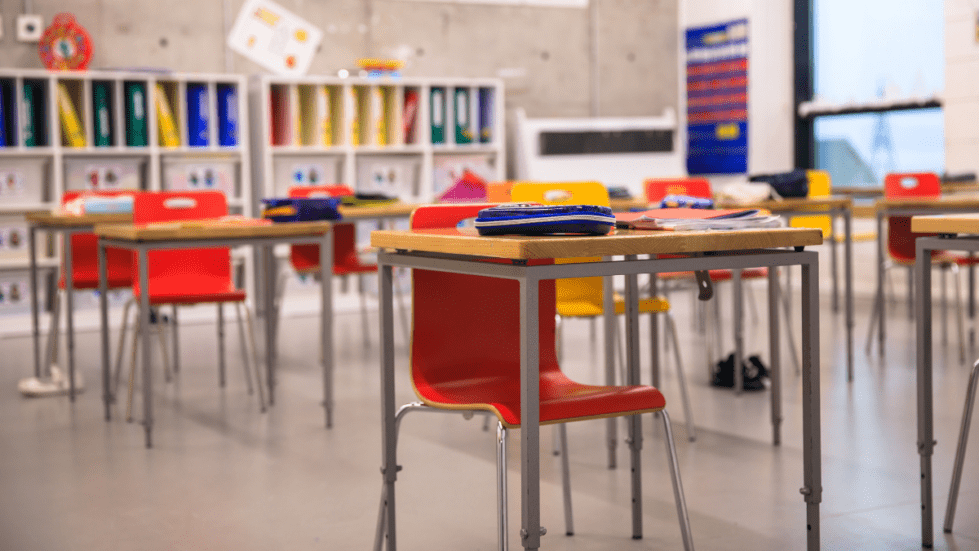

Milford School District Board of Education learned details on new educational equity programs being offered in the district
Dr. Brittany Hazzard, Supervisor of Equity and Support Services provided to students to the Milford School District Board of Education. Dr. Hazzard provided a definition of educational equity and what an inclusive educational environment meant.
Educational equity means that each child receives what they need to develop their full academic and social potential. And their potential is our goal. Our goal is to ensure that our students are in positions to reach their fullest potential,” Dr. Hazzard said. “When you look at an inclusive educational environment that is focusing on the climate of our schools in our classrooms, and we refer to that as an environment where all students feel supported intellectually and academically, and have an extended sense of belonging in those environments.”
Dr. Hazzard explained that she was grateful for the outstanding team Milford had put together to ensure students reach their full potential. The district holds monthly support service team meetings where they discuss student needs as well as solutions to those needs. They work with a McKinney-Vento liaison to address the needs of children who may become homeless. Other support services include home visits, social skill groups, holiday support, food pantries, clothing closets and more.
“We’re happy to have engaged over this past year with what is called Take Care of Delaware. Take Care of Delaware is a state initiative that allows us to be alerted when we have students that have experienced some level of hardship or contact with any type of agency dealing with concerns in our community,” Dr. Hazzard said. “They alert us so that we can alert our buildings to “handle our children with care.” This partnership is extremely necessary because we are a trauma informed state and trauma informed school, but also so that we can ensure that we welcome our students into our buildings, giving them the best care that we can. I would like to take note of our Risk 2 Suicide trainings that have been ongoing for our support staff here, our nurses, our psychologists, and within and also our counselors work with our suicide awareness that we have here at Milford School District and we do have this training ongoing so that our new staff that are on board are able to have access to that training as well.”
Another partnership that assists the district with providing equity in the classroom is the Delaware Prevention and Behavioral Health Services who connect students to a higher level of care when it is necessary. Moving forward, Dr. Hazzard stated that district administration underwent culturally responsive training in 2021 and that they have partnered with UPenn Delaware Valley Consortium of Equity and Excellence for ongoing professional learning. Trauma-SEL-McKinney-Vento trainings were held in 2021 as well while all administrators are undergoing book study for culturally responsive school leadership currently. The district is in Phase I of District Leadership Training & Campus Leadership Training through the Equity and Beyond partnership.
“We will be having an Equity Audit that began this month,” Dr. Hazzard said. “When you talk about taking a closer look at the needs of our students and how best to support them, the Equity Audit is something that will help us begin that journey along with the great work that is being done with our strategic planning team.”
School Board President Jason Miller asked Dr. Hazzard to describe an equity audit. Dr. Hazzard explained that an Equity Audit allowed the district to take a deeper look into the specific needs of different cultures in the community. Phase I includes a staff audit which had already begun and then they move into the next phase which will reach into the community. Board Member Jean Wylie asked if all schools were included in the audit and Dr. Hazzard replied that the entire district was included.
I have a question as this is opportunity to educate myself. So, I spent the last several days reading up on these topics. I’m going to ask what I think at least are some very simple questions and I know that you are extremely knowledgeable, and you have a degree in this field. So, if you could answer my questions with lay language as much as possible, I would very much appreciate that,” Board member Dr. Adam Brownstein said. “So, I guess my most basic question is, how do we know if equity works? We have these policies. We’re doing these things. Even when it starts to take hold, and there’s a positive effect, how would that affect the measured? What are the positive things that you see on the other side of this program?”
Dr. Hazzard explained that educational equity focused on ensuring children receive what they need to develop their full academic and social potential. She stated that it was difficult to pinpoint if the program was “working,” but by providing services to the student and giving them the support they need as unique individuals, the district would be able to see improvement both academically and socially.
“So the place where I get confused, and I’m hoping you can shed some light on this based on what you’ve said. And sort of this philosophy in general makes perfect sense to me, in a world of unlimited resources. But, as our budgetary people point out, at every meeting, we do not have unlimited resources. And therefore, the more resources you provide to an individual by definition, must take some resources away from another individual,” Dr. Brownstein said. “And so the question I have is, in a world of limited resources, how do we justly allocate to those in need if by the very act of doing so it necessarily takes resources away from someone else.”
Dr. Brownstein used the example of a math teacher with 100 students with 80 of the class good at math but 20 who were not good at math. He pointed out that, as a teacher, he would naturally need to spend more time with the 20 students which would take away from the other 80 students. He stated that this was where he struggled with the concept and was concerned that, because the district does have limited resources, students who did not need extra support may suffer as resources would be taken away from them. He asked Dr. Hazzard how these resources could be allocated so it did not take away from other students.
“That’s a great question. And I think that’s why I love the work that I do. As a social worker by trade, our goal is to ensure that everyone gets their needs met, and that is the definition of equity in which I shared earlier. And so yes, that then presents a challenge. But the beauty of that is that our students know that there is someone out here who is accepting the challenge to ensure that they get their needs met,” Dr. Hazzard said. “And so, the beauty of our state is there are tons of organizations that have opened collaborations so that if there is a moment where there may seem as if there are resources that can be allocated, then there are tons of nonprofit organizations that collaborate and state organizations that collaborate with our schools so that we ensure that all of our students get what they need. I cannot speak to a moment where a student or a family came and asked for support, and we had to say we cannot support them. And I say that, noting the strengths of Milford School District and the connections that they built, or that we’ve built over the years, I think that is something to honestly be proud of, because you’re right. If we look at it on paper, it may not make sense, but I think that’s the beauty of those who have stepped up to the challenge to ensure that we’re going to do what’s necessary to collaborate to support our students.”
Miller pointed out that it may be an oversimplification to say that one student needing more services would pull resources from a particular funding source which would reduce services for other students.
“Sometimes, when certain things are identified, there are resources outside of our current pool of resources that we can then bring in,” Miller said. “It’s not really someone who is taking away resources but resources added in addition to what we currently have.”
Share this Post


